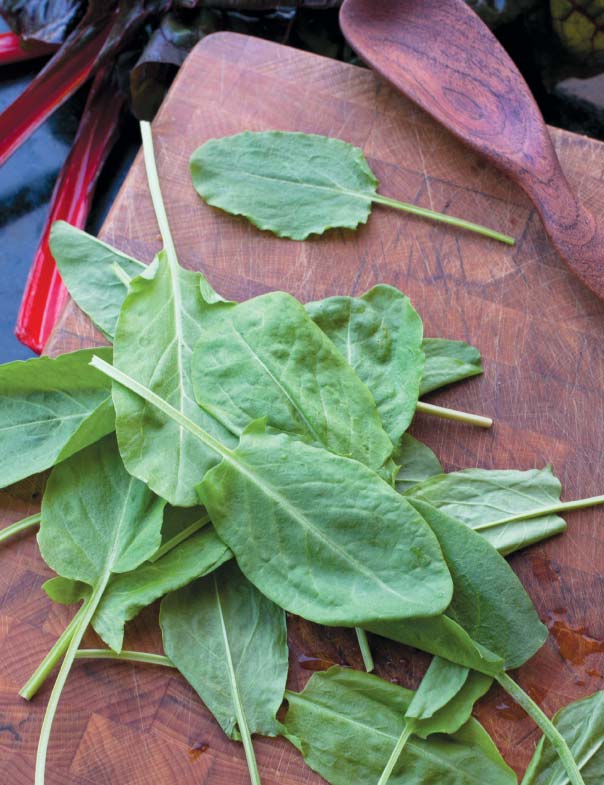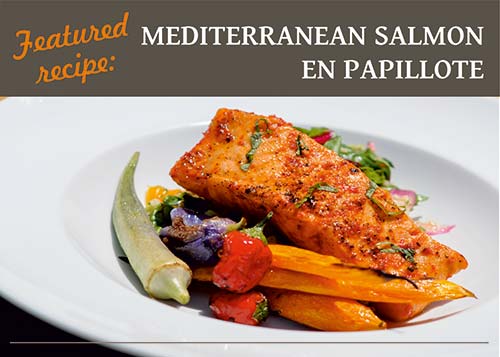
Photo by Kelly Yandell
Considering the weather extremes in North Texas, it is amazing that we have the good fortune to grow such a broad spectrum of fruits and vegetables. Our year-round gardening season—especially in the cool months—offers a range of edibles, some of which you might not know. While you may be familiar with red-veined bloody sorrel, used mostly as an ornamental, you might yet have been introduced to its close cousin French sorrel.
When it comes to French cooking, sorrel is a must. The beautiful bright green foliage is both earthy and lemony in flavor. It finishes sharp due to its high oxalic acid content. In fact, the name “sorrel” is derived from the Teutonic word “sour.” This is a good reason to avoid cooking French sorrel in any sort of metal pot. I absolutely love using fresh baby French sorrel leaves in salad, but when cooked it makes a delicious soup and colorful sauce. While I’m not a red meat eater, I hear it’s also a fabulous complement to fatty meats. Experienced gardeners are accustomed to the onset of summer heat when the access to fresh garden greens comes to an end. With the exception of Swiss chard, most greens never make it past the end of May; at least not in any sort of edible condition. Creatures of cooler temperatures, plants like lettuce, spinach and mustard greens are signaled by warmer temperatures that it is time to bolt, or produce seed, and expire. It always feels like winning the lottery when you find a leafy edible that has potential to perennialize.
French sorrel is a perennial herb belonging to the buckwheat family. Endemic to the highland areas of Southern France and adjacent European countries, this edible ornamental adapts naturally to much of North America. Now, I’m not going to say that French sorrel is impervious to our summer heat—it is not. Further north, sorrel can perennialize long-term. Here in North Texas however, our intense summer heat can be tough on this species. But given the right placement and care, I’ve had success getting two or three years out of a planting. That’s good enough for me!
Choosing the right location and exposure for your sorrel will aid in stretching its life span in your garden. Sorrel will thrive in a location with a few hours of sun in the morning and shade from midday on. Even a location with dappled sunlight may be enough. Leafy greens will tolerate more shade than plants producing harvestable flowers or fruit, such as tomatoes and peppers. Protection from the sun is most important during the brutal months of summer.
French sorrel needs consistent moisture, so amend your soil with organic compost and a bit of expanded shale. It also does well when planted in raised beds with enriched soil and improved drainage.
Normally, you won’t have to provide much extra water to your sorrel plants during the cool winter months, as there is usually enough rainfall to keep plants thriving. But as soon as warmer temperatures arrive in spring, be sure to provide supplemental water once or twice per week and then more in summer. Mulch plants with a 1” layer of shredded mulch to help conserve moisture. Apply a root stimulator to your plants during the first year and in the following spring and early fall, provide an application of organic herb or veggie food.
As with most leafy greens, you can start loose-leaf harvesting after plants have had a couple of months to establish and put on new growth. You may discover the leaves of very young plants don’t offer up much flavor. As plants develop and the season continues, the lemony tones will grow stronger. I often find that leaves harvested in fall from spring-planted sorrel taste the best.
Transplants of French sorrel can be hard to come across, but check with your local independent garden centers in spring and fall for availability. Sorrel is very easy to start from seed indoors in the winter, and then directly in the garden mid-March to early April, and again in late-September through October.
Leslie Finical Halleck, owner of Halleck Horticultural, is a Certified Professional Horticulturist (CPH) with more than 20 years of industry experience. www.lesliehalleck.com
RECIPE
French Sorrel Soup de ma Grand-mère
LESLIE FINICAL HALLECK received her B.S. in Biology/Botany from University of North Texas and her M.S. in Horticulture from Michigan State University. From 1992- 1996, she worked garden center retail and ran her own small gardening business. In 1998, she joined the Dallas Arboretum, first as Curator of Plants and then Director of Horticulture Research, a joint position with Texas A&M University. In 2005 she joined North Haven Gardens in Dallas as their General Manager. Over the last 13 years, she’s written for scientific, trade and popular garden publications and regularly lectures and teaches gardening programs. www.growlively.typepad.com/











